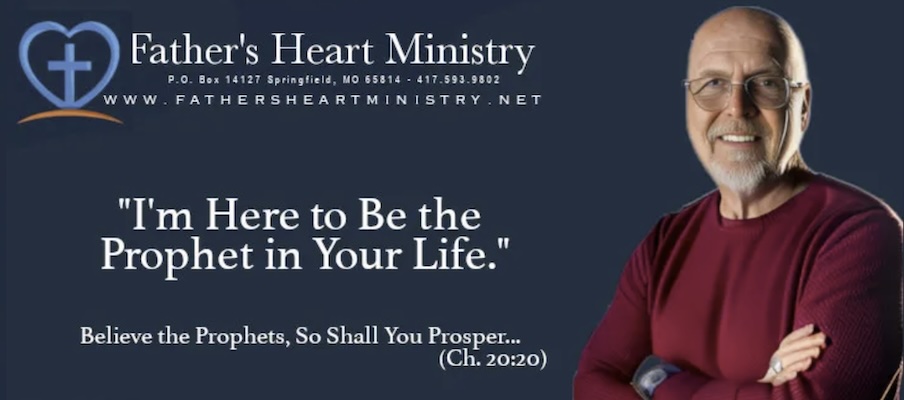Source:
https://ift.tt/2JHoNsW
 Today: [2 John 1:] Is Truth a Doctrine or a Person? In 2 John the apostle writes to a family he is close to regarding certain false teachings. There was a belief in ancient times that Jesus did not come in a physical body or die a literal death. John disputes this and thereby helps us understand how to identify false doctrine and how we should conduct ourselves when we encounter those who teach such error.
Today: [2 John 1:] Is Truth a Doctrine or a Person? In 2 John the apostle writes to a family he is close to regarding certain false teachings. There was a belief in ancient times that Jesus did not come in a physical body or die a literal death. John disputes this and thereby helps us understand how to identify false doctrine and how we should conduct ourselves when we encounter those who teach such error.
Listen Daily at www.morninglightbiblestudy.com
[2Jo 1:1-13 KJV] 1 The elder unto the elect lady and her children, whom I love in the truth; and not I only, but also all they that have known the truth; 2 For the truth’s sake, which dwelleth in us, and shall be with us for ever. 3 Grace be with you, mercy, [and] peace, from God the Father, and from the Lord Jesus Christ, the Son of the Father, in truth and love. 4 I rejoiced greatly that I found of thy children walking in truth, as we have received a commandment from the Father. 5 And now I beseech thee, lady, not as though I wrote a new commandment unto thee, but that which we had from the beginning, that we love one another. 6 And this is love, that we walk after his commandments. This is the commandment, That, as ye have heard from the beginning, ye should walk in it. 7 For many deceivers are entered into the world, who confess not that Jesus Christ is come in the flesh. This is a deceiver and an antichrist. 8 Look to yourselves, that we lose not those things which we have wrought, but that we receive a full reward. 9 Whosoever transgresseth, and abideth not in the doctrine of Christ, hath not God. He that abideth in the doctrine of Christ, he hath both the Father and the Son. 10 If there come any unto you, and bring not this doctrine, receive him not into [your] house, neither bid him God speed: 11 For he that biddeth him God speed is partaker of his evil deeds. 12 Having many things to write unto you, I would not [write] with paper and ink: but I trust to come unto you, and speak face to face, that our joy may be full. 13 The children of thy elect sister greet thee. Amen.
The epistle of 2 John is believed to be written by the same person who wrote 1st and 3rd John according to church tradition. Modern scholarship as is their custom disputes the authorship of the Gospel of John and 1st, 2nd, and 3rd John believing them all to be pseudepigrapha (written anonymously while claiming to be authored by John, the disciple of Jesus). 2nd and 3rd John are similar in content, each addressing false doctrines concerning the incarnation of Jesus.
In v. 1 the letter opens addressing “the elect lady” and her children. There are various interpretations of this. Some believe that the elect lady is a metaphor representing the church at large as the bride of Christ. Others hold that the elect lady and her children are Jesus’ mother Mary, and Jesus four half brothers. Still others believe these individuals are an actual family and make various suggestions about who they think they might be.
Verse 1 refers to the recipients as those who know the truth which is repeated in v. 2. The truth in v. 2 is described anthropomorphically as truth personified, in keeping with John 14:6, wherein Jesus spoke of Himself as the way the truth and the life. Our truth then is not merely a doctrine. Our truth is a person, and His name is Jesus. Doctrine and teaching can be true and contain truth, but Jesus is the personification of truth. If we have Jesus, we have the truth whether we have a doctrinal understanding of the subtler points of theology or not.
In v. 3 reference is made again to the truth and again in v. 4, the author speaks of the family the letter is addressed to as “walking in the truth.” To walk in the truth is described further in v. 4 as the basis of a commandment which all believers have received from the Father. How do we walk in truth? We receive the truth when we receive Jesus. To walk means to progress by steps. This is important to make a note of. In renewalist (Pentecostal/Evangelical/Charismatic Christianity) we tend to see impartation from God as coming spontaneously in a moment of time. The idea of walking in truth or walking in the Spirit implies process, something that unfolds progressively. This would agree with other scriptures that speak of growing in grace.
We are not left to ourselves once we come to Jesus. We are the planting of the Lord, and He intends that we are nurtured from immaturity to maturity until we produce the fruit that the Father looks for in His children.
In v. 5 John repeats the command that characterizes all his writings, namely that they love one another. This is the commandment given by Jesus at the beginning, and the commandment that we should seek continually to give ourselves over to. The word there is “agape” and defines love as “to welcome, to entertain, to be fond of, to love dearly, to be well pleased, to be contented with…” These expressions are intended to be descriptive of our attitudes toward one another.
John contrasts the love of the saints and their embrace of truth by the many deceivers that are gone out into the world. As in 1 John he specifically focuses on those who do not believe that Jesus came in the flesh. This was a common false belief of that time regarding the incarnation. Many felt that Jesus did not come as a flesh and blood man. They held that he only appeared to be a man and just appeared to die on the cross since God is not a man and God cannot die. John sharply rejects this thinking and warns the recipients of his letter to pay close heed not to receive such teachings or those that disseminated them.
In v. 9 there is mention of the doctrine of Christ. This is not referring to the teachings of Jesus, but rather the teachings generally agreed upon by the apostles regarding who Jesus was. The doctrine of Christ is best summed up by the apostle Paul in 2 Timothy 2:5:
[1Ti 2:5 KJV] 5 For [there is] one God, and one mediator between God and men, the man Christ Jesus;
This doctrine of Christ maintains then that Jesus is God and He is also a man. Further, He is the singular mediator between God and man. As Jesus Himself said, no man comes to the Father but by Him. It isn’t enough to believe that Jesus was a good man or a prophet. He is much more than this. He is very God and very man. He is not a hybrid creature either. He is 100 percent God and 100 percent man. If He is not a man and not God in this fashion, then He is not a mediator, and we are yet in our sins. You can identify false doctrine and false teaching by those points in which spurious teachers stray from these verities.
How do you handle false teachers? Don’t let them into your house. Do not entertain them. Do not bless them or send them on their way with any material support. If you support them in any way, you are a partaker of their judgments. Does this mean you should argue or rail upon these false believers? No. They are taught that the dispersions of those who do not agree with them only serve to show how right they are. Be courteous but firm. They are trained of course to keep talking as long as you will stand there. So after giving them a firm and civil statement that you are not interested in what they have to say, close the door and be done with them. To do otherwise invites demonic presence in your life and your home. It is also essential that you do not take literature from them. The Mormon church believes explicitly in a demonic influence they call “the witness of the spirit” that they draw on to accompany them in their efforts to convince others to join them. This is a demon that counterfeits some of the physical manifestations that we feel in God’s presence. Remember that goosebumps or feeling heat in your body doesn’t mean God has touched you. Not everything spiritual is godly.
With these warnings, the writer concludes his letter with a promise to meet with the family face to face for more instruction. Notice how personal John is with the people. He is in their life. He isn’t just standing on a platform. He is coming to be a part with them. He is willing to be in their midst, and they are eager to have him in their homes. This is how the early church functioned. Constantine changed all this when he demanded the churches to meet in central locations and gather in settings that mimicked exactly the Greek theater that was common in those days. He wanted the church to look familiar to those pagan influences who were now being urged to accept the faith; therefore, he abandoned the holistic setting of the house church for the pompous, performance orientation of Greek theater. Thus the church moved from being the church to portraying the church, and that institution continues to this day.
Discover more from Fathers Heart Ministry
Subscribe to get the latest posts sent to your email.

